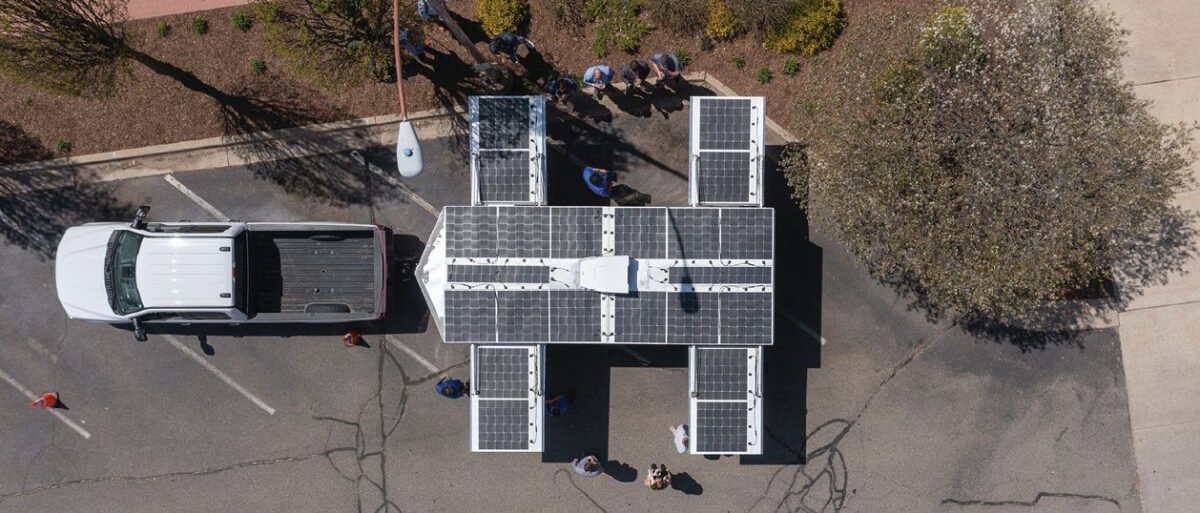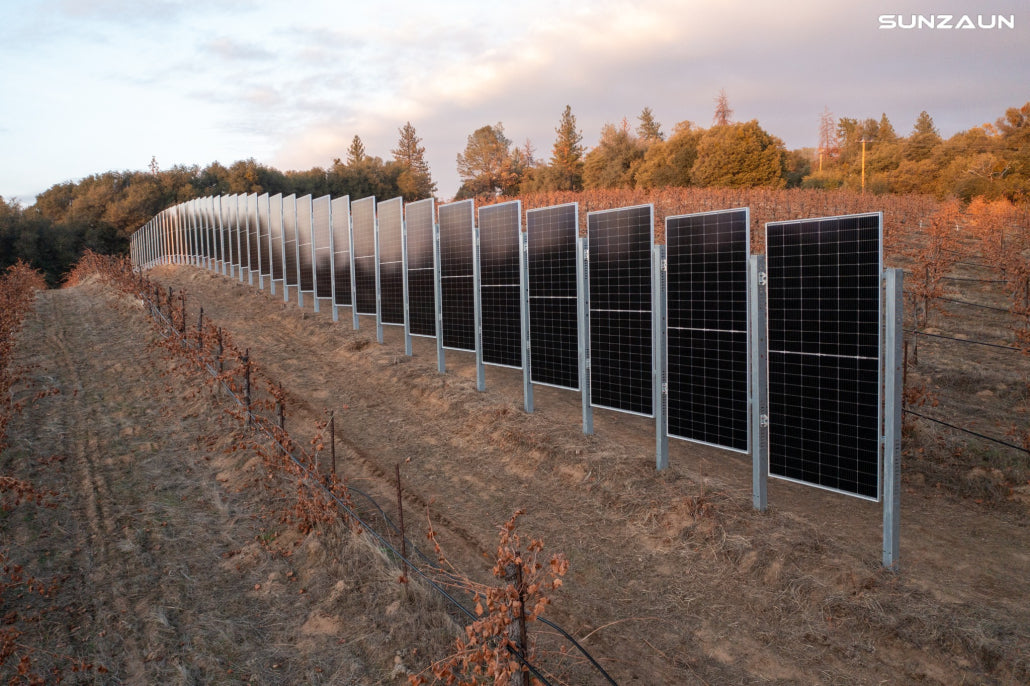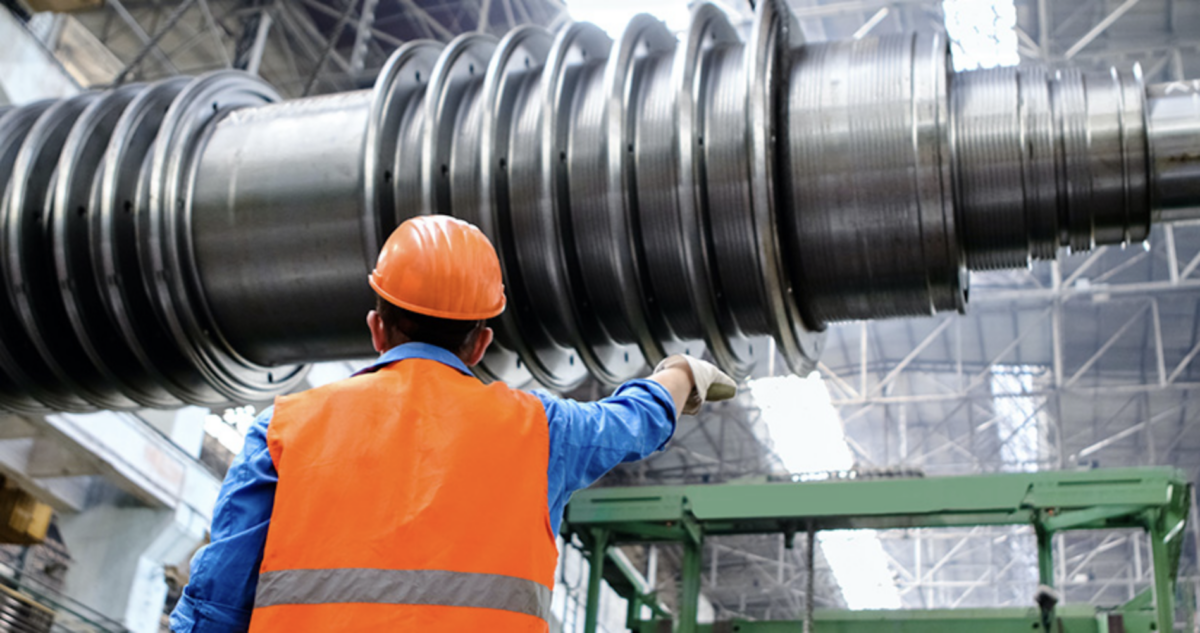https://www.pv-magazine.com/2024/01/20/weekend-read-decarbonizing-disaster-response/
Decarbonizing disaster response

Nanogrids can be set up in 15 minutes, according to Sesame Solar.
Photo: Sesame Solar
Water, power, and shelter. Whether earthquakes, extreme weather, or sudden refugee crises occur, all three are crucial when disaster strikes. Solar is playing an increasing role in providing all three for first responders.
While a mature technology, solar is a relative newcomer to emergency response. PV’s technological advances and affordable price mean non-profits and private companies are taking solar to places in desperate need of power.
In September 2017, Hurricane Maria struck the US territory of Puerto Rico causing destruction and almost 3,000 deaths. Energy infrastructure was wrecked and more than 90% of the island’s residents lost power. US-based non-profit Empowered by Light was one of the first groups on the ground.
Founded in 2011, Empowered by Light began as a charity providing solar to remote schools in Zambia. It has completed more than 80 solar and energy storage projects in nine countries. Developmental work still makes up the core of the non-profit’s activity but executive director and co-founder Moira Hanes told pv magazine that when Hurricane Maria hit, Empowered by Light had the chance to show how quickly solar can be deployed.
“We’re not normally an emergency response disaster relief organization,” she said. “But after the hurricane, we immediately went out to the island. We started putting solar energy [with] storage on fire stations so that they could continue to operate, or be operating again because a lot of them had been on these generators which had broken down. They couldn’t even receive 911 calls or effectively dispatch their personnel.”
Why solar?
Reliability was a main benefit of solar on Puerto Rico, Hanes said. Not only were some diesel backup generators failing, it was occurring at the worst possible time regarding replacement parts.
“Diesel generators break down and you can’t get the part in a timely manner because your supply chain and supply routes have been constrained because of the disaster,” said Hanes, “PV is reliable and renewable and it’s not polluting.”
Empowered by Light has installed solar arrays on 11 Puerto Rican fire stations, in partnership with other charitable groups and businesses. The charity has also provided PV support to communities on Maui, Hawaii, following the outbreak of wildfires on the US island in early August 2023. In Maui, innovative approaches to disaster PV included the use of what Hanes described as “powerfield buckets,” made up of rows of solar modules connected to donated Tesla Powerwall batteries.
“That was immediately deployed to power the aid distribution site,” said Hanes. “It’s powering refrigeration, lighting. They’re cooking three meals a day there.”
Empowered by Light is not a manufacturer or installer. The charity works with local PV companies where possible, ensuring relief efforts provide new opportunities for a community’s solar industry.
“We will use a local [engineering, procurement and construction company] that is as close to that community as possible,” said Hanes. “That way, we’re helping build local capacity. We have advisers, our engineers can weigh in on the design but we’re trying to make certain everything is done on as local a level as possible. We’re also trying to procure hardware in the country, wherever possible. So you’re not shipping modules from the US, for example, to Africa, which is cost prohibitive.”
Cost is the other factor that comes up when discussing PV in a disaster context. A can of diesel is a lot cheaper than a PV module and cash is a precious resource in communities facing the cost of rebuilding. Empowered by Light has a diverse group of backers providing financial assistance. OpenSolar in particular has made a significant contribution to Empowered by Light, with the solar design software company pledging to donate 1% of its annual revenue to the charity’s projects.
Duck curve financing
Footprint Project is another charity supporting solar relief efforts on Maui. The organization has partnered with Empowered by Light in the past and the pair expect to collaborate on longer-term solar projects on the island.
When it comes to disaster funding, Footprint Project operations director and co-founder Will Heegaard said he would like to see greater investment ahead of time – although that can be a challenge for relief organizations. Much as with solar generation and grid capacity, there is a gap between the peak funding period for disaster relief and demand for finance. Most donations come in the wake of a disaster. The money is obviously welcome but a cash injection in the weeks and months before incidents occur could arguably go further. That way, more resources and infrastructure would be in place to react.
“We need to solve the duck curve of disaster financing,” said Heegaard. “If we’re going to be successful in expanding adoption of renewable technologies in disaster affected communities, we need the industry to pony up and invest in our work ahead of time. Otherwise, we will not be as successful as we could be.”
The resources deployed can vary at Footprint Project. Jamie Swezey, the organization’s program director, described his employer as technology agnostic.
Popular content
Broadly, the non-profit seeks to replace the 2 kW to 10 kW diesel generator. Its microgrids, therefore, operate in and around that range. That can mean a 2 kW or smaller set-up handy for charging cell phones in a crisis or a converted shipping container fitted with 10 kW to 20 kW solar arrays and 100 kW of battery storage. Footprint Project’s biggest microgrid to date, with a capacity of around 80 kW, can be found in Napili Park, on Maui.
Those PV installations don’t just supply power for relief work, they improve quality of life for first responders, according to Footprint Project. Swezey said that the non-profit has considered finding a way to record decibel levels, as one of the most frequent benefits cited by first responders when PV is installed is the reduction in noise level.
Sound isn’t the only thing that can make diesel generators a pain. First responders working around generators often complain of headaches, which Heegaard described as a symptom of low-grade carbon monoxide poisoning. Things can get much worse depending on where and how fossil fuel generators are used.
“After Hurricane Laura hit the gulf [of Mexico], more people died from carbon monoxide poisoning from running their gas generators in their garage, to power their house, than died from the hurricane itself,” said Heegaard. “It’s a huge health risk for a number of reasons.”
Business case
Using solar in disaster response is more than a charitable endeavor. At Michigan-based start-up Sesame Solar, the potential to use mobile “nanogrids” in a crisis serves as the foundation of a business – one that’s been steadily expanding. Founded in 2017, the nanogrid manufacturer has picked up a diverse range of clients with an interest in disaster response.
US communications giant Comcast has used Sesame Solar nanogrids in the aftermath of hurricanes in both Louisiana and Florida. The U.S. Air Force makes use of the company’s nanogrids as a mobile medical base and for command and security. In Santa Barbara County, California, the local government has invested in Sesame Solar nanogrids that are towed to locations using all-electric Ford-150 trucks.
Now with financial backing from institutional investors such as Morgan Stanley, VSC Ventures, PAX Momentum, and Belle Capital, as well as endorsements from the likes of US President Bill Clinton’s non-profit Clinton Foundation and “Time” magazine, Sesame Solar is well positioned to make the shift to a global business, as co-founder and chief executive officer Lauren Flanagan explained.
“We’re already international,” she said. “I would like to be global through our partnerships. We have a subsidiary in India already but we still make everything in the United States. But it’s a global set of problems with a global marketplace.”
At Sesame Solar, the focus has been on creating a turnkey solution that requires no installation and is simple to use. Flanagan said the company’s trailer-mounted nanogrids can be operated with a small amount of training. Once up and running, she said, Sesame Solar offers a continuous energy loop that allows for consistent power, from 5 kW to 20 kW, depending on system specification. The trailer which houses the nanogrid also provides shelter from the elements.
Consistency is key. The intermittent nature of solar is not ideal in a disaster relief context, if left unaddressed. Sesame Solar solves this problem through a combination of battery storage and hydrogen electrolyzing capability.
It is a straightforward concept. Solar power is generated during daylight hours and can be used to power disaster response and charge the nanogrid’s battery storage. Stored power can then be deployed and any excess can be used to power hydrogen generation on board. Nanogrids fitted with a green hydrogen system for backup power include a large tank of deionized water. When the tank gets low, there is an integrated atmospheric water generator that generates distilled water, which is then deionized for use in hydrogen production. The hydrogen itself is stored as a solid, at low pressure, which means transportation does not trigger permit requirements.
“We make the deionized water we need to make the hydrogen gas we need, and you don’t do it all at once,” said Flanagan. “It’s in a sequence. You start out with full tanks of hydrogen and water and then you’re topping them up as needed because you’re not running the fuel cell full time. The whole point is that it’s a continuous green energy loop that allows for consistent, continuous power draw.”
Potable water is also on the menu, thanks to a partnership between Sesame Solar and Watergen Ltd. The Israeli company manufactures atmospheric drinking water devices that create potable water from the air.
It’s a total solution, according to Flanagan, with further scope for innovation in areas such as electric vehicle charging.
“That’s the idea,” she added. “Trying to eliminate the supply chain of having to bring hydrogen or fossil fuel or water into an emergency zone.”
This content is protected by copyright and may not be reused. If you want to cooperate with us and would like to reuse some of our content, please contact: editors@pv-magazine.com.



